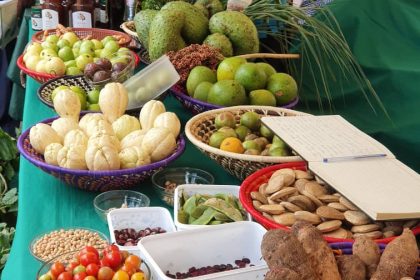Rising maize prices drive up cost of poultry feeds
The cost of poultry feeds is edging up in Uganda as farm gate prices for cereals rise following a shrinkage in supply. Maize prices have moved up from UGX300 to 650 for a kilogram in recent weeks feeding into prices for maize bran which is now retailing at UGX 720 per kilogram from 500 previously.
 Soybean is currently trading at UGX 2400 up from UGX 1000 while prices for Sesame have reached UGX4500 at farm gate. Prices now expected to peak off in May on the limb of the first harvest for 2019.
Soybean is currently trading at UGX 2400 up from UGX 1000 while prices for Sesame have reached UGX4500 at farm gate. Prices now expected to peak off in May on the limb of the first harvest for 2019.
Prices for cereals crashed following a bumper harvest last year as farmers who were running out of storage were forced to dump the May – July crop. Ordinarily, January should see lower prices for cereals but it is a believed that weak rains during the second half of the year resulted in widespread failure of the crop. Also, farmers discouraged by the poor prices planted less resulting in a lower harvest in December. North and Eastern Uganda are major cereal producers but trades who are combing the area for stocks are reporting scarcity.
It is now feared that this could fuel food inflation which has been low throughout 2018. Uganda experienced a bumper harvest of cereals and tubers which supported low prices for staple foods during the latter half of the year.
Strong stocks of green bananas and cassava are however expected to moderate the market through January. Food inflation is expected to rise between February and June when the new harvest will start to reach markets.
“2018 has been good. The first rains came in time across the country and even where we had floods, they came after the crop had been harvested,” said Mr. Opolot Okaasai, who recently retired as the Director for crop resources.
Fruits and vegetables have also been in abundant supplies. The season for most citrus like mangoes, oranges is on in addition to plenty of supplies of pineapples and water melon.
Experts are warning that the second rain season came late and remained erratic creating uncertainty over expected volumes of harvest. “We care likely to have a poor harvest in the second crop season and so we expect prices of food crops to go up,” Okaasai explained.
Domestic prices are also expected to come under pressure from regional demand. Uganda reported a trade surplus with Kenya last year, driven mainly by sale of unprocessed cereals and legumes.

 100+ Accelerator selects Ugandan startup Yo-Waste to pilot glass recycling at Nile Breweries
100+ Accelerator selects Ugandan startup Yo-Waste to pilot glass recycling at Nile Breweries
 With eyes on oil and gas, France pledges USD 3 billion investment in Uganda
With eyes on oil and gas, France pledges USD 3 billion investment in Uganda
 Uganda urged to pitch for organic produce during NAM Summit
Uganda urged to pitch for organic produce during NAM Summit
 NOGAMU’s Namuwoza tapped to lead bid for increased intra-African trade in organics
NOGAMU’s Namuwoza tapped to lead bid for increased intra-African trade in organics
 From 3 padlocks to a click: Sipi Organic’s long walk to digital banking
From 3 padlocks to a click: Sipi Organic’s long walk to digital banking
 Nile Breweries launches UGX 4Bn barley processing facility in Kween district
Nile Breweries launches UGX 4Bn barley processing facility in Kween district
